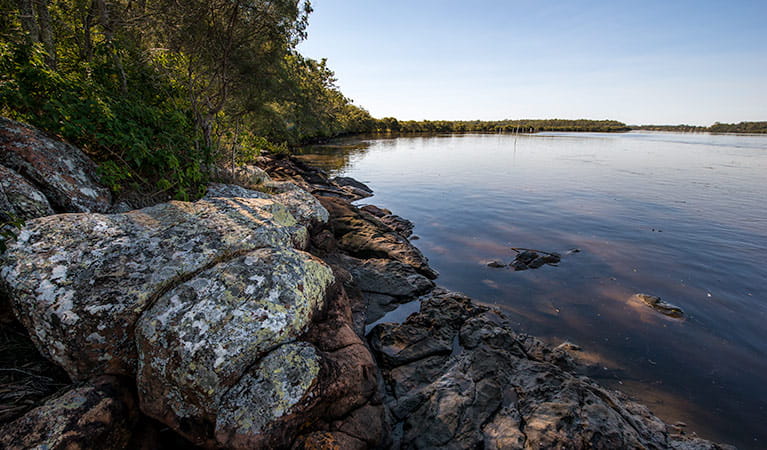Karuah National Park
Overview
Karuah National Park is an ideal place for 4WDing, mountain biking bushwalking, fishing, camping, paddling and picnicking – all just a short drive from Newcastle.
Read more about Karuah National Park
Get back to basics and spend a relaxing weekend by the river at Karuah National Park. Pack your mountain bike and explore the park on the network of 4WD trails. It’s also a great place for picnicking by the water. Launch your boat, kayak or canoe and enjoy paddling on the beautiful waters of Karuah River.
Take advantage of this popular fishing destination and try your luck fishing with the kids. Then wander back to your campsite to watch the colours in the sky transform at dusk and get up close with some of the locals – bandicoots, goannas and brush-tailed possums, to name a few.
Sleep under the stars and wake up to the sound of birdcalls welcoming a new day. Enjoy a hot brekkie around the campfire looking out across the river from your campsite, as you get ready for another day surrounded by nature.
Local alerts
For the latest updates on fires, closures and other alerts in this area, see https://www.nationalparks.nsw.gov.au/visit-a-park/parks/karuah-national-park/local-alerts
Contact
- in the North Coast region
Karuah National Park is always open but may have to close at times due to poor weather or fire danger.
-
-
Anna Bay office
02 4984 8200
Contact hours: Monday to Friday, 8.30am to 4.30pm. - 4154 Nelson Bay Road, Anna Bay, NSW 2315
-
Email: npws.huntercoast@environment.nsw.gov.au
-
Anna Bay office
Visitor info
All the practical information you need to know about Karuah National Park.
Map
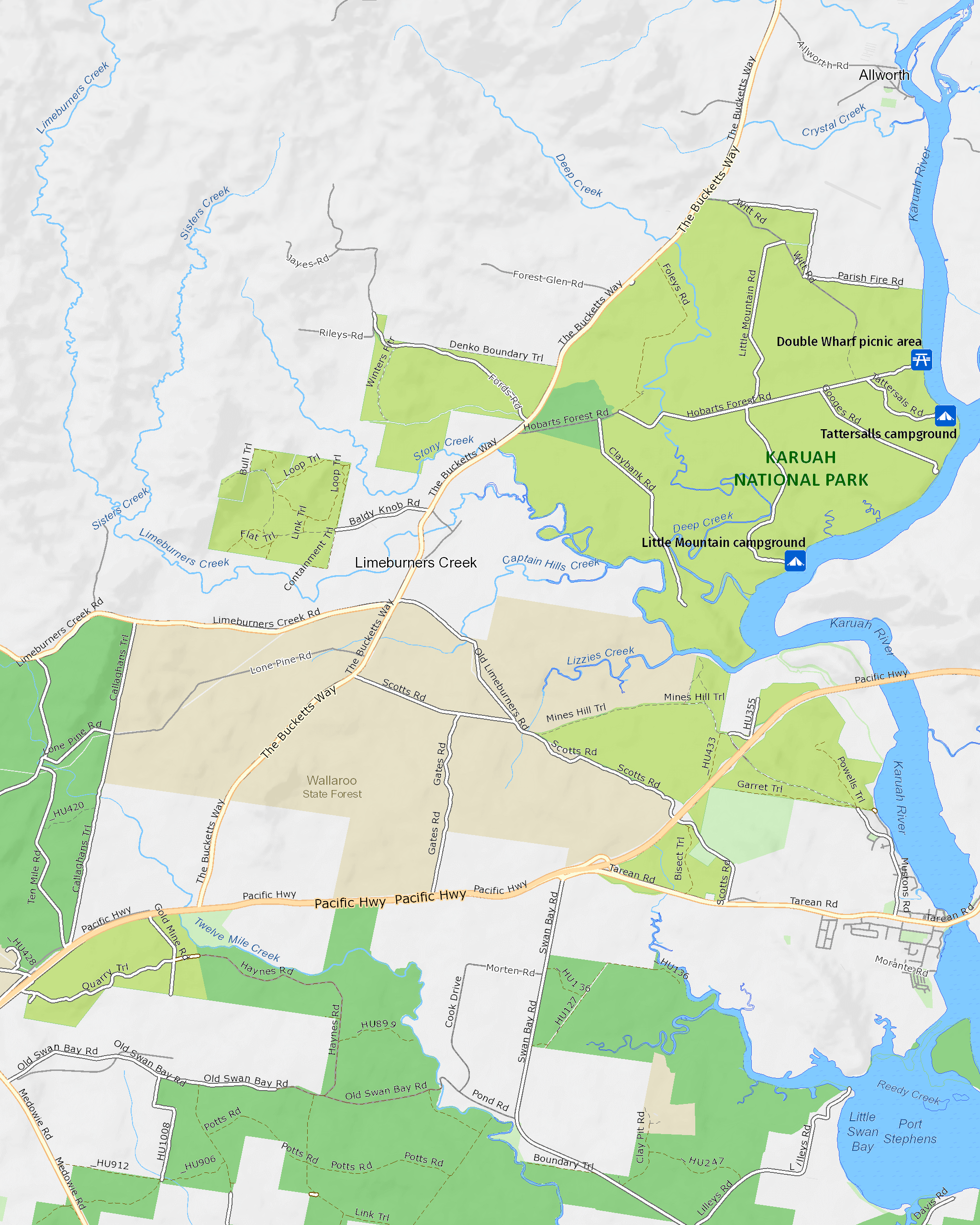
Map legend

Getting there and parking
Get driving directions
From Sydney:
- Travel north on Pacific Highway
- Approximately 17km after Raymond Terrace, turn left onto Bucketts Way
- Continue for approximately 9km then turn right onto Hobarts Road, just past Limeburners Creek.
Parking
- Tattersalls campground See on map
Road quality
- Unsealed roads
Vehicle access
- All roads require 4WD vehicle
Weather restrictions
- Dry weather only
By bike
Check out the Bicycle information for NSW website for more information.
By public transport
Karuah National Park is not accessible by public transport.
Best times to visit
There are lots of great things waiting for you in Karuah National Park. Here are some of the highlights.
Autumn
Pack your fishing gear and head to the river at this popular fishing spot.
Spring
See how the wildflowers bring the bush to life in spring.
Summer
Launch your kayak, canoe or boat and explore the reserve by water.
Winter
Get cosy around the campfires on those cold winter nights.
Weather, temperature and rainfall
Summer temperature
Average
12°C to 28°C
Highest recorded
40.6°C
Winter temperature
Average
3°C to 18°C
Lowest recorded
-4.4°C
Rainfall
Wettest month
March
Driest month
September
The area’s highest recorded rainfall in one day
573.8mm
Facilities
Amenities
Picnic tables
Barbecue facilities
Boat ramp
Maps and downloads
Prohibited
Pets
Pets and domestic animals (other than certified assistance animals) are not permitted. Find out which regional parks allow dog walking and see the pets in parks policy for more information.
Smoking
NSW national parks are no smoking areas.
Nearby towns
Tea Gardens (21 km)
The closest ocean beach to Tea Gardens is Bennetts Beach, a long stretch of golden sand that's patrolled during school holidays and weekends over the summer. South Bennetts Beach leads you to the Yacaaba Headland walk, one of Port Stephens finest.
Newcastle (58 km)
Newcastle is a harbour city surrounded by amazing surf beaches that are linked by a great coastal walk, the Bathers Way. The walk from Nobbys Beach to Merewether Beach takes about three hours and is a great way to explore the city.
Nelson Bay (62 km)
Nelson Bay is a major holiday playground and the main resort area of Port Stephens. It's located on the southern shores of Port Stephens.
Learn more
Karuah National Park is a special place. Here are just some of the reasons why:
Rich in heritage sites
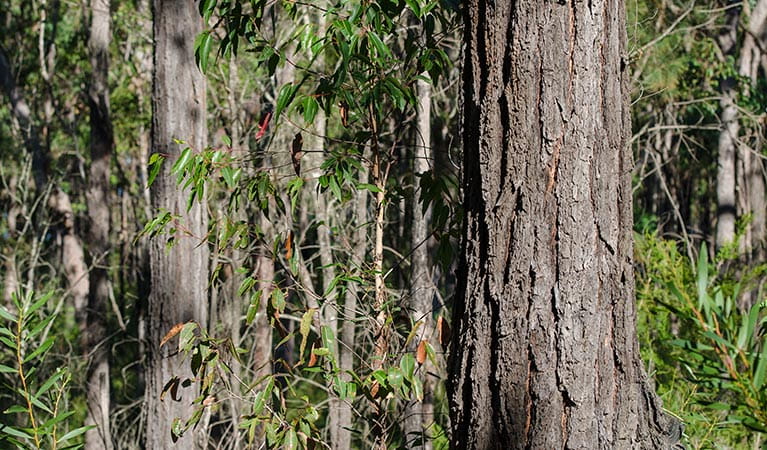
As well as being a place of natural beauty and tranquillity, Karuah has many historic sites to remind you of the forestry industry that once thrived in this region. Driving through the forest, you'll be driving along a road network built by the timber industry and see timber loading ramps on the banks of the river at Double Wharf. Other historic sites to discover are a set of yards at Witt Road and the Hunter Jetty on Claybank Road.
Bird watching retreat
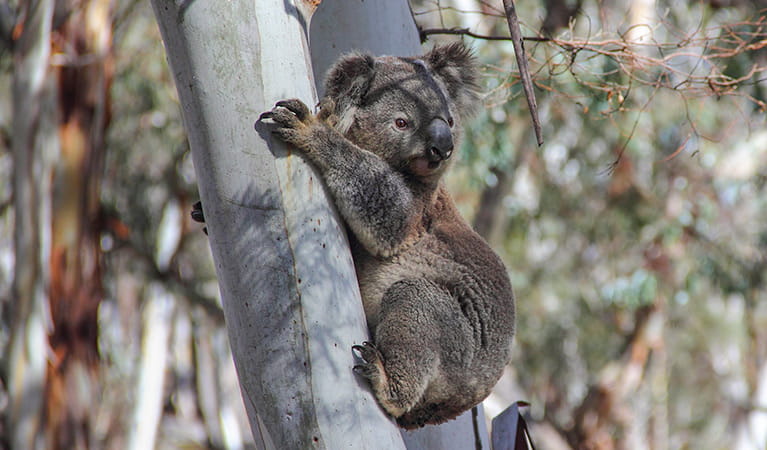
You'll find an abundance of birdlife to watch at Karuah. Vulnerable species such as the square-tailed kite, swift parrot and masked owl find their home in eucalyptus woodlands. Glossy black cockatoos can be seen feeding on the casuarina stands along the river's edge. You might also see one of the 8 vulnerable bat species found here, including little bent-wing bats and greater broad-nosed bats. Karuah is also home to plenty of native animals. You'll most likely share your camping spot with locals like bandicoots and ring-tailed and brush-tailed possums. There's also a local koala population at Karuah, so keep your eyes peeled when you're walking through the eucalypt forest.
- Double Wharf picnic area Take a day trip from Newcastle and spend the day picnicking, bushwalking, fishing, paddling and boating on the river at Double Wharf picnic area in Karuah National Park.
Ancient connections
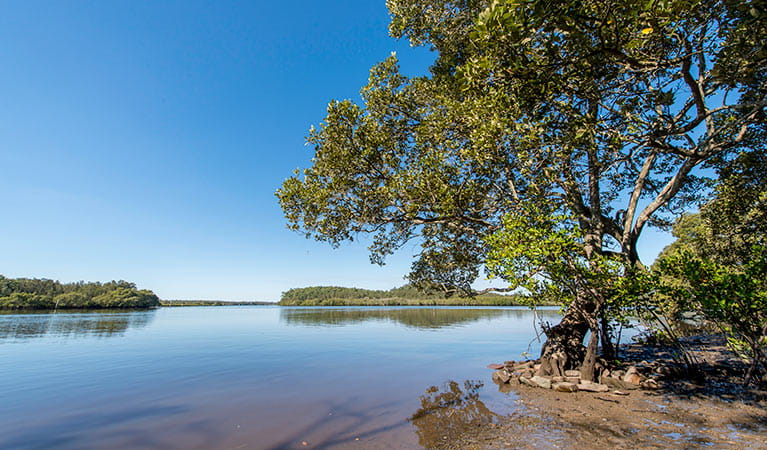
Karuah National Park is part of the traditional lands of the Worimi Nation. Before European settlement, the Worimi People lived in an area from Port Stephens to Forster and as far west as Gloucester. There are a number of recorded Aboriginal sites in the reserve, particularly along Karuah River, such as modified trees, artefacts, earth mounds, shell middens and a burial site. The Worimi people continue to have a strong connection with the animals, land and waterways of Karuah.
Education resources (1)
What we're doing
Karuah National Park has management strategies in place to protect and conserve the values of this park. Visit the OEH website for detailed park and fire management documents.

